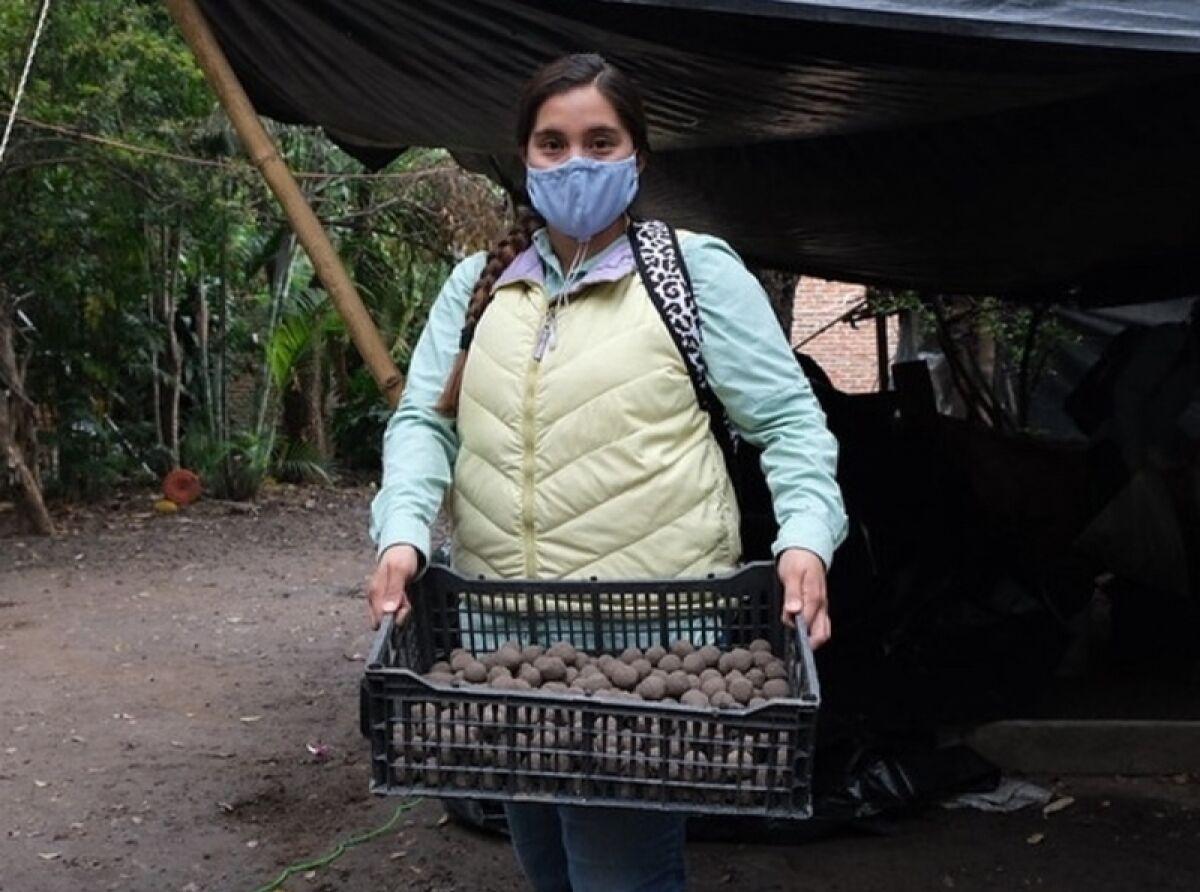For the conservation of the Natural Protected Areas of Jalisco, restoration and soil conservation works are regularly carried out.
The Intermunicipal Association for the Protection of the Environment and Sustainable Development of Lake Chapala in collaboration with the Ministry of Environment and Territorial Development (SEMADET,) implemented a program to promote revegetation in the Cerro Viejo-Chupinaya-Los ANP Sabinos, Sierra Cóndiro-Canales and Cerro San Miguel-Chiquihuitillo.
For 4 months, 60 women from the rural communities of San Juan Evangelista in Tlajomulco de Zúñiga, Santa Cruz de La Soledad in Chapala and San Miguel de La Paz in Jamay, worked with the Fukuoka method of natural agriculture for reforestation. It is a system that consists of respect for natural cycles and the conditioned interaction of biomass and soil.
Invented by Masanobu Fukuoka , one of the fathers of permaculture (agriculture fully integrated into natural cycles,) Nendo Dango literally means “clay balls.”
It basically consists of creating a mixture of clay, earth, manure, seeds of various native plant species, some natural repellent (such as pepper,) and water , and then molding small balls or discs with said mixture. These, once dry, are spread over recently burned or degraded land, or anywhere in need of reforestation. Thus the seeds are kept fresh and protected from animals that could eat them until the rains arrive, at which time they begin to germinate on a wonderful base of fertilized clay substrate.
It is estimated that, with this technique, 2% of the seeds germinate and survive, a ratio 10 times higher than that of other commonly used seeding practices. The method can also be used to create a home garden with your choice of seedstock.

A good mix could consist of the following:
40 units of earth and clay, with twice as much clay as earth. Ideally, you should use local soil and clay, but it is not always possible to get them.
10 units of organic material, such as compost, manure, or worm castings.
1 unit of seed mix. For reforestation purposes, it should be as diverse as possible, with herbaceous plants, shrubs, and native trees. Herbaceous legumes should account for 70% of the total, since they are the ones that grow first and die first, contributing nitrogen to the soil. This fertilizes it, and generates a good microclimate for the subsequent germination of other herbaceous plants, shrubs, and trees.

To make the clay balls, tours were carried out to collect and select local seeds, and later germination tests were carried out to determine their viability. Seeds of Campanilla, Copal, Guácima, Guaje, Guamúchil, Huizache, Mezquite, Ozote, Palo Blanco, Palo Dulce, Pochote, Rosapanal, Tepehuaje and Zorrillo were collected.
This Thursday the conclusion of the project was carried out in the municipality of Tlajomulco de Zúñiga, where the group of women from this community made a presentation and disseminated around 40 thousand clay balls made during the program on soils that have suffered some degree of degradation.
In addition, groups of women with a high degree of communication and fellowship were formed, and forests were enriched with native seed, strengthening local capacities. This project will continue with monitoring, surveillance, and reporting of activities to strengthen established groups and seek new members for them.

